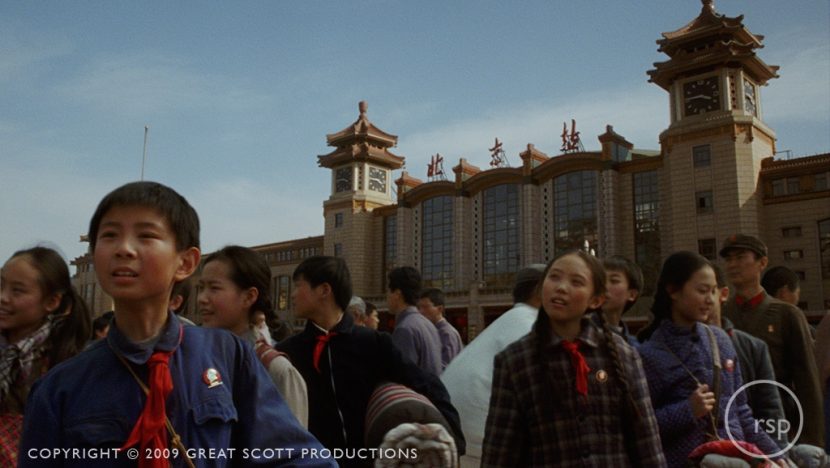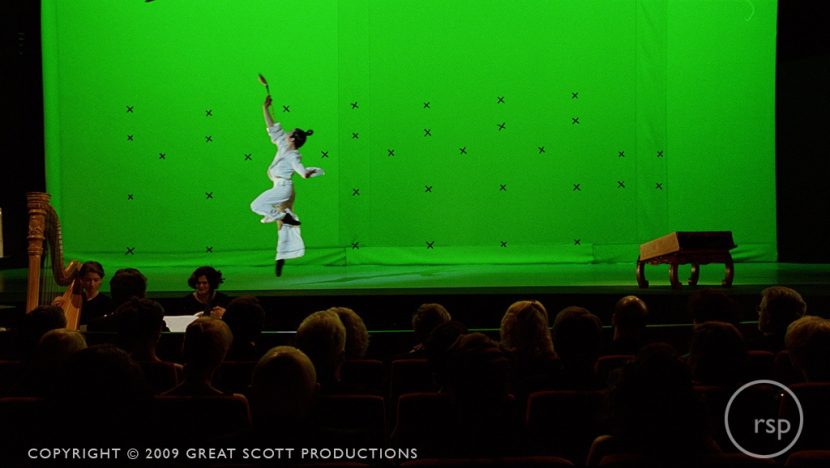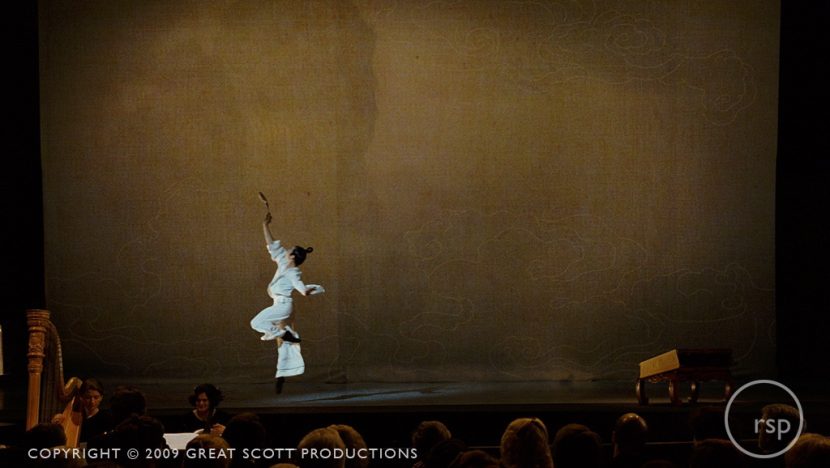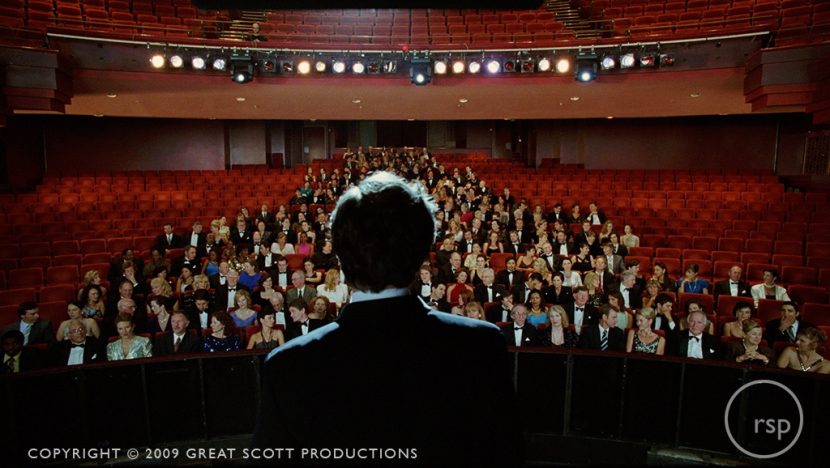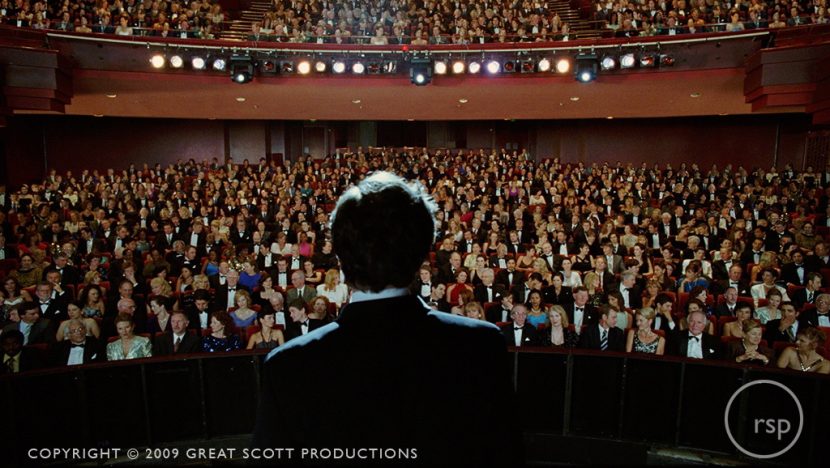Bruce Beresford’s Mao’s Last Dancer, the story of a poor Chinese boy’s journey to a top American ballet troupe, features just over 70 visual effects shots from Rising Sun Pictures, including traditional greenscreen composites, a matte painted stage backdrop and crowd replication. We talk about the seamless work with visual effects supervisor Tim Crosbie.
fxg: Certainly, the work is largely invisible. What were some of the characteristic effects you had to do?
Crosbie: Yeah, it was really all about enhancing the story, so it was nice to be invited to help do that. One of our traditional-type effects was driving glass composites. There’s a sequence in Chicago where they’re driving through the streets. It was deemed more cost effective to do the interior of the car as a greenscreen and then pop the streets in afterwards. We also added in what I like to call ‘VFX glass’ which is a process of adding glass along with appropriate reflections into the glass, dirtying them up and making them look real. Putting a reflection into a windscreen that wasn’t there at the time of the shoot is not just about slapping it on. You have to take account of what sort of reflectivity the glass would have, the surroundings, warping the image at the edges to give the feeling of refraction, adding in little bits of dust and dirt, and that the reflected images are commensurate with the angle of the windscreen to camera. We sent one of our guys out on a weekend and his passenger shot some video footage outside of the car, just to help visualise for the artists what it would actually look like. We composited it all in Shake.
fxg: How did you approach the stage backdrops in the theatre, which change as the dancers perform?
Crosbie: That was a lot of fun. Nick Pill was our conceptual artist and matte painter for those shots. He and I were given a book of traditional Chinese drawings by Bruce Beresford. He asked us to draw inspiration from that for the silkscreen effect behind the dancer. When I was a kid my parents used to take me to the theatre and I remember those days quite well, surprisingly enough! It was just so magical how set designers could make sets look. It was all about trying to play with negative space and working with shadows and trying to get that feeling of space happening behind the action.
One of the hardest things, particularly in a composite, is that you’re basically looking at a fairly small screen and it’s not an easy or intuitive mental process to realise what’s happening in that space unless you’re working with a full 3D package, in which case you can start flying a CG camera around. Similarly, this is all front on and conceptually quite tricky. But luckily we had a guy by the name of Will Gammon who composited this sequence for us and he’s quite an exceptional artist. We were essentially trying to realise it in 3D space but doing it in two dimensions.
fxg: What were the challenges in particular, given it was shot against greenscreen?
Crosbie: Pulling the key was remarkably simple because it was properly lit. The toughest thing was doing things like working out where say a pass of the shadow had to come on and therefore we had to work out where the light source might be in physical space. So we had to translate the images on screen to how it might work if you were set designing it for the stage. Creatively, the brief came from Bruce that he wanted the images to be there but he left it up to us as to how we would actually bring them on. We had to try to make it happen as simply as possible with the dance moves. We just knew that each of the shapes had to come up in certain timings.
When all of the research and development had been completed the final build ended up being a relatively simple process. Essentially just using the animation curves in Shake to bring up pass over pass over pass. I should stress the word relative here. The lighting and shadow relationships between the passes required a lot of planning to set up to make the final build easier to manipulate as feedback came in from Bruce. In the end we pretty much hit the nail on the head within the first few iterations thanks to all the conceptual work.
The matte painting done by Nick in Photoshop had about 15 different layers. We storyboarded it through to work out which layers would come on when. Because we were constrained by the mechanics of what would happen in real life, there were only a certain amount of techniques that we could employ. So a lot of it became an exercise in transitioning from one layer to the next in Shake using the appropriate maths of real world physics as our guide. If there were mountains in a shot, say, they needed to feel further away and slightly out of focus. Then we had the blossoms, which had some animation and allowed us to give the backdrops a little extra movement. At all times we kept going back to the mantra “what would be possible in that era of set design”.
fxg: Can you talk about the crowd replication shots?
Crosbie: We did these in a very traditional way. For the shots in the theatre, there was a middle crowd for one plate, then we shot them on the left and on the right. We integrated the plates with a combination of splitscreen and where the spaces overlapped or if it looked like we had doubles, we just plucked people from the crowd and changed the colour of their clothes and moved them. There were some other crowd replication shots done in a similar way for the train station in China.
fxg: What were some of the other shots RSP worked on?
Crosbie: There’s also a sequence at the end of the film where the audience throws streamers at the stage. When they shot it, the scene didn’t quite have the big impact they were after. So we built a bunch of CG streamers to go along with a set of practical streamers shot against black and added them into the shots. In a train shot, there were some young kids staring out of the train that was shot without glass, so we added VFX glass.
Another shot with a steam train coming from middle distance to screen camera left involved a mix of three plates and getting the steam from one to another, which was pretty tricky. In the Chinese Embassy there was an exit sign we had to take out because it had English writing on it. There were also some exterior shots of an open air theatre that needed a little work, mostly colour correction and a little roto/paint work. One of these shots had a PA walking into the scene while on a mobile phone, would have been fine if he hadn’t been on the phone but seeing as this is just before the 80s we removed it.
fxg: There were also some nice slow motion-type shots I noticed?
Crosbie: There’s a slow motion shot of the young actor moving through time to become the old actor, almost like a transitional phase through his life. He’s jogging towards the camera with his other classmates. It was just a question of trying to marry the two plates. We could have done it as a full-on morph experience where all the heads change but that would start breaking you out of the story, I think. So we went back to a more traditional cross-fade. But we found that the jogging pace of a child and of a young man differ quite significantly.
So we took a careful approach to matching the action and lining up the head and the face just to aid the dissolve. Then there’s a shot of the bow and arrow being shot. That was shot on a Photosonics video camera against greenscreen. We had to manipulate it to work from video colourspace to film colourspace. Video has approximately 6 1/2 to 7 stops of latitude, so blacks can’t go totally black and whites can’t go completely white compared to film. Film neg has between 12 and 13 stops of lattitude which is significantly better. So as things got black on the video footage we pulled it down even further so that it sat better with the surrounding shots in the film.
fxg: Did you use any particular techniques to do that?
Crosbie: We used Shake’s re-timer. I think we had a play with Kronos also. My initial visual effects work was on Flame and then I moved to Cineon back in the 90s. I always thought Cineon’s retimer was the best. From what I remember, the code that was written for Kronos was based on how the re-timer worked in Cineon. But for the simpler things, you often find the heavier tools give you almost too much. It’s often about finding the tool for the job that’s the most appropriate.

